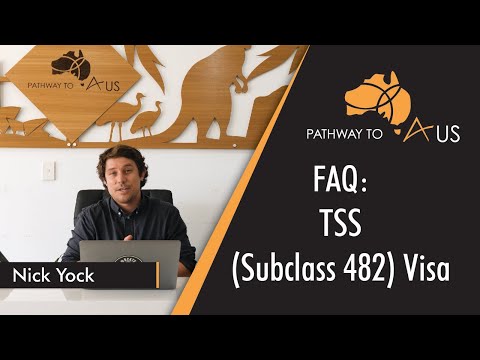Guide to the Visa Subclass 482
Today, we will explore the Temporary Skill Shortage Visa Subclass 482. People often call this visa the Employer Sponsored Visa. This guide is for employers and skilled workers.
If you are an employer considering sponsorship, this guide will help you. If you are a skilled worker seeking opportunities, this guide is also for you. This will help you understand the main points of the 482 visa.
What is the 482 Visa?
The TSS 482 visa replaced the 457 visa in a government rebranding effort. While the two visas are similar, the 482 visa comes with stricter requirements. They introduced it to address skill shortages while ensuring that Australian workers have priority for available jobs.
1. Who Can Sponsor an Employee?
Most Australian businesses, including large companies and small startups, can sponsor a skilled worker with the 482 visa. To qualify as a sponsor, a company must:
- Operate lawfully in Australia.
- Be financially capable of meeting sponsorship obligations, including covering the employee’s salary and superannuation.
Important Tip: Startups may face more scrutiny, especially if they have limited financial history or resources. Demonstrating a stable operation with adequate revenue is crucial.
2. Nomination Stage: Meeting the Requirements
The nomination stage is where most applications face challenges. Employers must show there is a real need for the job. They must also prove they cannot fill the position with an Australian citizen or permanent resident. Key steps include:
- Labor Market Testing: Advertise the role for at least 21 days, showing efforts to hire locally.
- Salary Requirements: Pay the Australian market rate, with a minimum salary of $53,900 per year.
- Check if the job is on the Medium and Long-Term Strategic Skills List (MLTSSL). Alternatively, see if it is on the Short-Term Skilled Occupation List (STSOL).
Pro Tip: If your job title isn’t on the list, review related occupations and their specializations. For instance, roles like “Brand Manager” may fall under “Marketing Specialist.”
3. Education and Work Experience Requirements
Applicants must meet specific education and work experience standards for their nominated role:
- Education: Requirements vary by occupation. For example:
- Accountant: Bachelor’s degree.
- Painter: Certificate III in Painting and Decorating.
- Work Experience: At least two years of relevant post-qualification experience is mandatory. This experience must align with the nominated occupation and its listed tasks.
4. Pathways to Permanent Residency
A frequent question we hear is: Can the 482 visa lead to permanent residency?
- If your job is on the MLTSSL, you might qualify for permanent residency. You can apply through the Employer Nomination Scheme (ENS) subclass 186.
- If your role appears on the STSOL, you may have limited options for permanent residency. However, you might have alternative pathways, like the 190 or 491 visas.
5. Common Pitfalls to Avoid
- Mismatch in Job Title and Duties: Immigration focuses on duties rather than titles. For instance, if you hold the title “Accountant” but perform bookkeeper tasks, the system may refuse your application.
- Incomplete Documentation: Ensure you provide all required evidence, from qualifications to work experience.
Alternatives to the 482 Visa
If the 482 visa isn’t a fit, consider these options:
- State Nomination Visas: Subclass 190 and 491.
- Regional Sponsored Visa: Subclass 494.
- Studying a New Course: Pursue a qualification in a field listed on the MLTSSL for better PR prospects.
Need Help?
Navigating the 482 visa process can be complex, with evolving regulations and requirements. At Pathway to Aus, our registered migration agents are ready to help you. We will assess your situation and guide you through the process.




